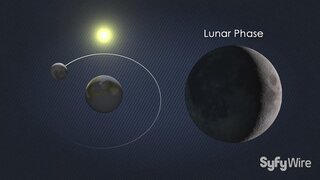Create a free profile to get unlimited access to exclusive videos, sweepstakes, and more!
Named for a Serpent Deity, NASA's Apep Mission Is Set to Fire Rockets at the Eclipse
Anytime you have a chance to shoot a rocket at a shadow for science, you should take it!
In the 2006 disaster flick Solar Attack, a coronal mass ejection from the Sun threatens to ignite the atmosphere and end all life on Earth. The solution involves shooting a nuclear missile at the North Pole to put out the planet-spanning fire. Fortunately, solar activity doesn’t really present that much of a threat to the planet, but that won’t stop real-world scientists from firing a trio of missiles at the upcoming solar eclipse on April 8.
It isn’t quite as wacky as it might sound and there are some interesting scientific reasons for shooting missiles at an eclipse. The mission is known as APEP (short for Atmospheric Perturbations Around the Eclipse Path), named for the Egyptian serpent deity and nemesis of the Sun god, Ra. An alternative name for the same deity, Apophis, is given to a near-Earth asteroid and the subject of NASA’s ongoing OSIRIS-APEX mission.
Why Is NASA Shooting Missiles at the Solar Eclipse on April 8?
The ionosphere is highly impacted by solar radiation and charged particles on the dayside of the planet. On the nightside, charged particles can relax back into the background before getting charged up again when the Sun rises. This creates a sort of regular cycle in the ionosphere with a normal ebb and flow. Scientists are hoping to learn what happens to that cycle when only a portion of the ionosphere experiences a rapid but temporary decrease in solar interaction.
Interactions in the ionosphere are of interest because they impact communications technologies. “It’s an electrified region that reflects and refracts radio signals, and also impacts satellite communications as the signals pass through. Understanding the ionosphere and developing models to help us predict disturbances is crucial to making sure our increasingly communication-dependent world operates smoothly,” said mission lead Aroh Barjatya, in a statement.
For More on Eclipses:
Conspiracies Orbit April 8 Total Solar Eclipse; Why You Shouldn't Worry
Everything to Know About April's Solar Eclipse, Including Where to Get Free Eclipse Glasses
Doomed Lunar Lander Captured a View of Earth That’s to Die For
As the Moon’s shadow cuts a path across North America on April 8, researchers expect it to trigger large-scale atmospheric waves and small-scale disturbances in the air overhead. We know already that a total solar eclipse can wipe clouds out of the lower atmosphere, but what happens in the ionosphere isn't as well understood. That’s where the missiles come in. The ionosphere hovers between 55 and 310 miles (90 to 500 kilometers) overhead in the sort of exploratory middle distance. It’s too high for most scientific balloons and too low for satellites; sounding missiles help bridge the gap to deliver instruments to this specific altitude.
The first of the three sounding rockets will launch from Wallops Flight Facility in Virginia 45 minutes before the peak of the eclipse. The second will follow at the peak, and the last will fly 45 minutes later. The idea is to capture information at various points to see how atmospheric changes evolve during an active eclipse. This will actually be the second flight for these rockets, having already flown during the October 2023 annular eclipse. After that mission they were recovered, refurbished, and made ready for another flight.
After launching, the rockets will rise to a maximum altitude of 260 miles (420 kilometers) measuring charged and neutral particle densities the whole way. At the top, they’ll release a suite of secondary instruments to gather additional data.
We won’t see another total solar eclipse over North America until 2044, so this is the last chance to gather this sort of data from this spot on the planet. Besides, any opportunity to fire missiles at a shadow for science is one we should take!
Continue the war on the Sun with Solar Attack, streaming now on Peacock.































